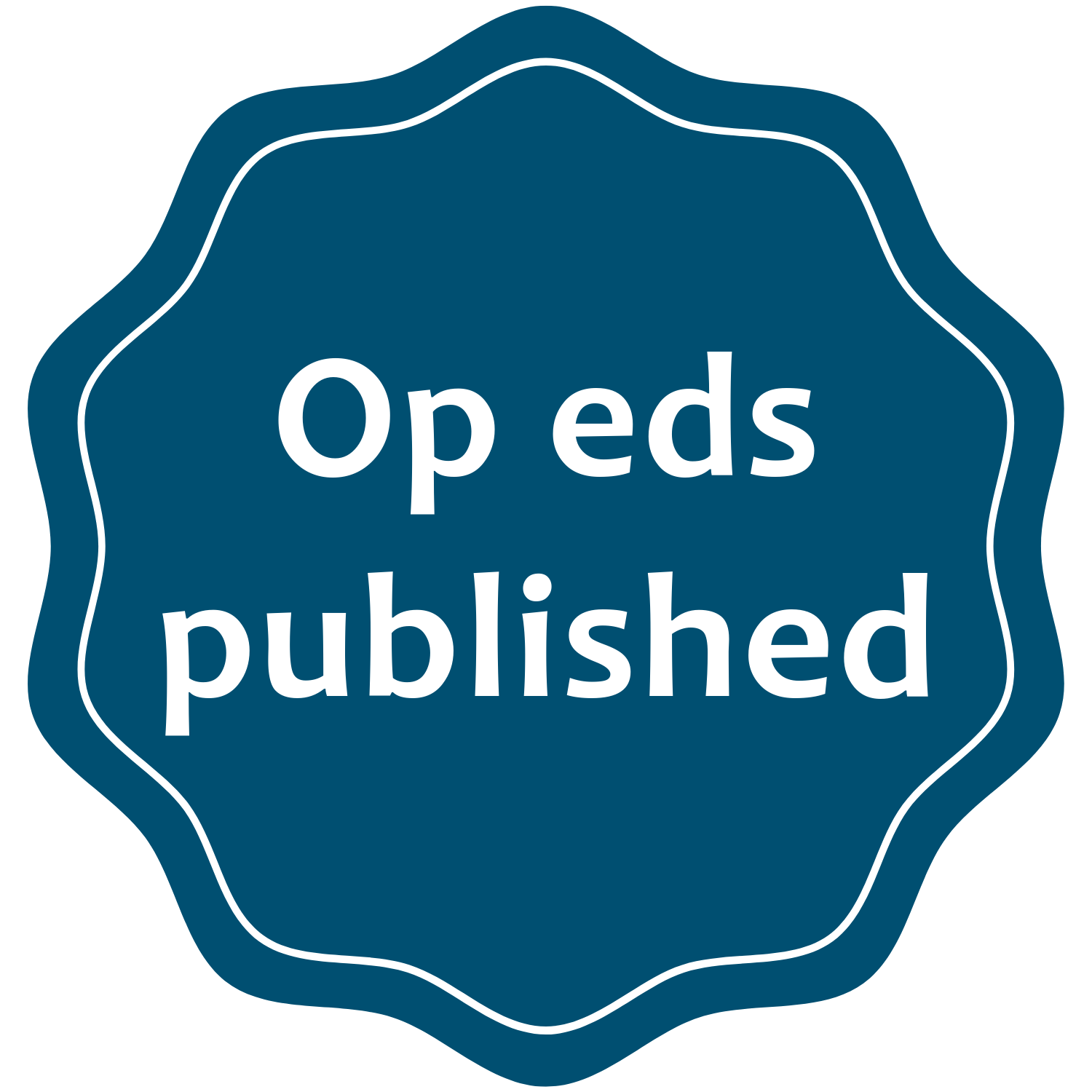
Dr. Krishana Sankar
Science Advisor, PhD,
Dr. Krishana Sankar is a Biological Scientist and Science Communicator. She received her PhD from the University of Toronto, in the Faculty of Medicine, with a concentration in Molecular, Cellular Biology & Human Physiology. Dr. Sankar is a sought after science communicator and keynote speaker.
She is currently the Scientific Liaison and Community Partnerships lead for an anti-misinformation campaign called ScienceUpFirst. She is also a science communication lead for COVID-19 Resources Canada, where she leads a kitchen table style COVID-19 discussions series. She also serves as an expert for COVID-19 Vaccine Safety Q&A sessions.
Dr. Sankar is also an immigrant woman of colour, originally from Guyana, South America. She is currently lending her expertise to her home country during the COVID-19 pandemic via panels, talks & discussions around misinformation and the COVID-19 vaccines.
Media
Krishana Sankar at the CSPC 2019
Krishana gives an interview about WOCScan (Women of Colour in STEAMM Canada) and at the Canadian Science Policy Center Conference 2019.
FSST keynote lecture 2019
I was invited to give the keynote lecture for the foundation for student science and technology.
Diabetes - Women in STEM Speaker Series
I was invited by the Royal Canadian Institute of Science (RCIS) to talk about my diabetes research for Diabetes Awareness Month. I was featured in their Women in STEM speaker series.
3 Minute Thesis Competition through UofT Women in Science & Engineering
The 3 Minute Thesis Competition - a competition where graduate students explain their thesis in 3 minutes in lay terms.
Inferior In Canada
I was part of a video to promote the "Inferior in Canada" campaign. This campaign aims to educate young girls and boys about the misinformation from science that encouraged harmful gendered stereotypes about their abilities, particularly in the STEM fields.
WonderWomen in STEM Virtual Summit 2018
I spoke at a free virtual conference “Wonder Women in STEM” which aimed to highlight and showcase incredible women in STEM speaking on topics covering Career advice, Mental Health in Academia; Entrepreneurship in graduate school; mentorship and so much more.
My talk covered alternative/non-academic careers post PhD/graduation. The youtube video is the uncut version of the conference. My talk starts at 4:02:33 and finishes at 4:36:19.
Tips on how to get a research position
Getting a research position for the first time is intimidating for all science students. How do you reach out to professors? What programs are available? How do you find your area of interest? Here to help is Krishana Sankar, a Ph.D student who provides tips and advice based on her own experience.

Women Shaping Canada: Krishana
Women Shaping Canada, December 13, 2018Radio/Podcast
URL: https://thewon.podbean.com/e/women-shaping-canada-krishana/
Invited to chat about my research, mental health in academia, being a woman in STEM and the challenges I face.

Krishana Sankar on the book Inferior
Fresh Air with Nana aba Duncan on CBC, February 9, 2019Radio/Podcast
Krishana Sankar is a doctoral researcher at the University of Toronto in the Faculty of Medicine. She is on a mission to bring "Inferior: How Science Got Women Wrong and the New Research That's Rewriting the Story" to high schools across Canada.

Decoding Diabetes & SciComm
HerSTEMstory, September 19, 2018Radio/Podcast
URL: https://herstemstory.com/podcast/episode-30-decoding-diabetes-scicomm/
Our guest today was always a curious kid. She is a currently pursuing PhD from the University of Toronto and her research focusses on using a bioengineering technique to improve the way islets of Langerhans survive after being removed from a donor, which is a form of diabetes treatment. Along with all this great research work, Krishana is a very engaged science communicator and advocate for getting more women in STEM fields.

Diabetes with Krishana Sankar
Global Caveat, May 20, 2019Radio/Podcast
URL: https://globalcaveat.com/diabetes-with-krishana-sankar/
I chat with the hosts of Global Caveat about my research into Diabetes treatment using biology and engineering and the Diabetes Epidemic. I also talk about the advocacy work that I do with Diabetes Canada and beyond through my #150mins diabetes campaign.

Chasing Non-Science Passions (w/ Krishana Sankar)
Science Sucks, May 27, 2019Radio/Podcast
URL: https://anchor.fm/sciencesucks/episodes/16--Chasing-Non-Science-Passions-w-Krishana-Sankar-e45e0c
Krishana is a doctoral fellow studying diabetes at the University of Toronto. She is a self-proclaimed “serial entrepreneur,” having kickstarted the #150minutes campaign for diabetes awareness, her organization WOCSCAN, and the Inferior In Canada Campaign. We chat about her research, advocacy, and the perks of chasing hobbies alongside your career!

Wonder Women in STEM 2019 conference
Wonder Women in STEM, November 2, 2019Online
My talk is at 4:27:50.
For the Wonder Women in STEM conference 2019, I gave a workshop on resume writing tips for Non-Academic jobs.

Toward more visible figures: WISE hosts screening of Hidden Figures and panel discussion about women in STEM
WISE UofT (Women in Science & Engineering), September 26, 2017Online
Article about a panel put on by WISE UofT for Science Literacy Week in 2017, where panelists spoke about their experience in STEM and addressed the barriers faced by women in STEM fields.
Culturing pancreatic islets in microfluidic flow enhances morphology of the associated endothelial cells
by Sankar KS, Green BJ, Crocker AR, Verity JE, Altamentova SM, Rocheleau JV.
Published by PLoS ONE
September 22, 2011
Abstract
Pancreatic islets are heavily vascularized in vivo with each insulin secreting beta-cell associated with at least one endothelial cell (EC). This structure is maintained immediately post-isolation; however, in culture the ECs slowly deteriorate, losing density and branched morphology. We postulate that this deterioration occurs in the absence of blood flow due to limited diffusion of media inside the tissue. To improve exchange of media inside the tissue, we created a microfluidic device to culture islets in a range of flow-rates. Culturing the islets from C57BL6 mice in this device with media flowing between 1 and 7 ml/24 hr resulted in twice the EC-density and -connected length compared to classically cultured islets. Media containing fluorescent dextran reached the center of islets in the device in a flow-rate-dependant manner consistent with improved penetration. We also observed deterioration of EC morphology using serum free media that was rescued by addition of bovine serum albumin, a known anti-apoptotic signal with limited diffusion in tissue. We further examined the effect of flow on beta-cells showing dampened glucose-stimulated Ca(2+)-response from cells at the periphery of the islet where fluid shear-stress is greatest. However, we observed normal two-photon NAD(P)H response and insulin secretion from the remainder of the islet. These data reveal the deterioration of islet EC-morphology is in part due to restricted diffusion of serum albumin within the tissue. These data further reveal microfluidic devices as unique platforms to optimize islet culture by introducing intercellular flow to overcome the restricted diffusion of media components.
URL: https://journals.plos.org/plosone/article?id=10.1371/journal.pone.0024904
LKB1 couples glucose metabolism to insulin secretion in mice
by Accalia FuKarine RobitailleBrandon FaubertCourtney ReeksXiao-Qing DaiAlexandre B. HardyKrishana S. SankarSvetlana OgrelOsama Y. Al-DirbashiJonathan V. RocheleauMichael B. WheelerPatrick E. MacDonaldRussell JonesRobert A. Screaton
Published by Diabetologia
July 1, 2015
Abstract
AIMS/HYPOTHESIS:
Precise regulation of insulin secretion by the pancreatic beta cell is essential for the maintenance of glucose homeostasis. Insulin secretory activity is initiated by the stepwise breakdown of ambient glucose to increase cellular ATP via glycolysis and mitochondrial respiration. Knockout of Lkb1, the gene encoding liver kinase B1 (LKB1) from the beta cell in mice enhances insulin secretory activity by an undefined mechanism. Here, we sought to determine the molecular basis for how deletion of Lkb1 promotes insulin secretion.
METHODS:
To explore the role of LKB1 on individual steps in the insulin secretion pathway, we used mitochondrial functional analyses, electrophysiology and metabolic tracing coupled with by gas chromatography and mass spectrometry.
RESULTS:
Beta cells lacking LKB1 surprisingly display impaired mitochondrial metabolism and lower ATP levels following glucose stimulation, yet compensate for this by upregulating both uptake and synthesis of glutamine, leading to increased production of citrate. Furthermore, under low glucose conditions, Lkb1(-/-) beta cells fail to inhibit acetyl-CoA carboxylase 1 (ACC1), the rate-limiting enzyme in lipid synthesis, and consequently accumulate NEFA and display increased membrane excitability.
CONCLUSIONS/INTERPRETATION:
Taken together, our data show that LKB1 plays a critical role in coupling glucose metabolism to insulin secretion, and factors in addition to ATP act as coupling intermediates between feeding cues and secretion. Our data suggest that beta cells lacking LKB1 could be used as a system to identify additional molecular events that connect metabolism to cellular excitation in the insulin secretion pathway.
URL: https://link.springer.com/article/10.1007%2Fs00125-015-3579-7
Allosteric modulation in monomers and oligomers of a G protein-coupled receptor
by Rabindra V Shivnaraine, Brendan Kelly, Krishana S Sankar, Dar'ya S Redka, Yi Rang Han, Fei Huang, Gwendolynne Elmslie, Daniel Pinto, Yuchong Li, Jonathan V Rocheleau, Claudiu C Gradinaru Is a corresponding author , John Ellis Is a corresponding author , James W Wells
Published by eLIFE
May 6, 2016
Abstract
The M2 muscarinic receptor is the prototypic model of allostery in GPCRs, yet the molecular and the supramolecular determinants of such effects are unknown. Monomers and oligomers of the M2 muscarinic receptor therefore have been compared to identify those allosteric properties that are gained in oligomers. Allosteric interactions were monitored by means of a FRET-based sensor of conformation at the allosteric site and in pharmacological assays involving mutants engineered to preclude intramolecular effects. Electrostatic, steric, and conformational determinants of allostery at the atomic level were examined in molecular dynamics simulations. Allosteric effects in monomers were exclusively negative and derived primarily from intramolecular electrostatic repulsion between the allosteric and orthosteric ligands. Allosteric effects in oligomers could be positive or negative, depending upon the allosteric-orthosteric pair, and they arose from interactions within and between the constituent protomers. The complex behavior of oligomers is characteristic of muscarinic receptors in myocardial preparations.
Single-Molecule Analysis of the Supramolecular Organization of the M2 Muscarinic Receptor and the Gαi1 Protein.
by Rabindra V. Shivnaraine, Dennis D. Fernandes, Huiqiao Ji, Yuchong Li, Brendan Kelly, Zhenfu Zhang, Yi Rang Han, Fei Huang, Krishana S. Sankar, David N. Dubins, Jonathan V. Rocheleau, James W. Wells, Claudiu C. Gradinaru
Published by Journal of the American Chemical Society
September 24, 2016
Abstract
G protein-coupled receptors constitute the largest family of transmembrane signaling proteins and the largest pool of drug targets, yet their mechanism of action remains obscure. That uncertainty relates to unresolved questions regarding the supramolecular nature of the signaling complex formed by receptor and G protein. We therefore have characterized the oligomeric status of eGFP-tagged M2 muscarinic receptor (M2R) and Gi1 by single-particle photobleaching of immobilized complexes. The method was calibrated with multiplexed controls comprising 1-4 copies of fused eGFP. The photobleaching patterns of eGFP-M2R were indicative of a tetramer and unaffected by muscarinic ligands; those of eGFP-Gi1 were indicative of a hexamer and unaffected by GTPγS. A complex of M2R and Gi1 was tetrameric in both, and activation by a full agonist plus GTPγS reduced the oligomeric size of Gi1 without affecting that of the receptor. A similar reduction was observed upon activation of eGFP-Gαi1 by the receptor-mimic mastoparan plus GTPγS, and constitutively active eGFP-Gαi1 was predominantly dimeric. The oligomeric nature of Gi1 in live CHO cells was demonstrated by means of Förster resonance energy transfer and dual-color fluorescence correlation spectroscopy in studies with eGFP- and mCherry-labeled Gαi1; stochastic FRET was ruled out by means of non-interacting pairs. These results suggest that the complex between M2R and holo-Gi1 is an octamer comprising four copies of each, and that activation is accompanied by a decrease in the oligomeric size of Gi1. The structural feasibility of such a complex was demonstrated in molecular dynamics simulations.
Biography
Dr. Krishana Sankar is an award winning & published scientific researcher. She completed her PhD at the University of Toronto, in the Faculty of Medicine where she conducted biomedical research into improving treatment techniques for diabetes. Dr. Sankar is a sought after science communicator and keynote speaker. She has spoken at >50 events nationally and internationally.
She is currently the Scientific Liaison and Community Partnerships lead for an anti-misinformation campaign called ScienceUpFirst. She is also a science communication lead for COVID-19 Resources Canada, where she leads a kitchen table style COVID-19 discussions series. She also serves as an expert for COVID-19 Vaccine Safety Q&A sessions.
She is also an avid advocate & serial social entrepreneur. She advocates for and has founded organizations that advocate for minorities in STEM (Science, Technology, Engineering, Mathematics); people with Diabetes; and mental health in higher education.
website: https://linktr.ee/KrishanaSankar
Additional Titles and Affiliations
GradWriteSlack
Founder & CEO
ScienceUpFirst
Scientific Liaison & Community Partnerships Lead
Advisory Committee member
COVID-19 Resources Canada
Science Communication Lead
Volunteer Programs Director (Previously)
Communications Lead (Previously)

